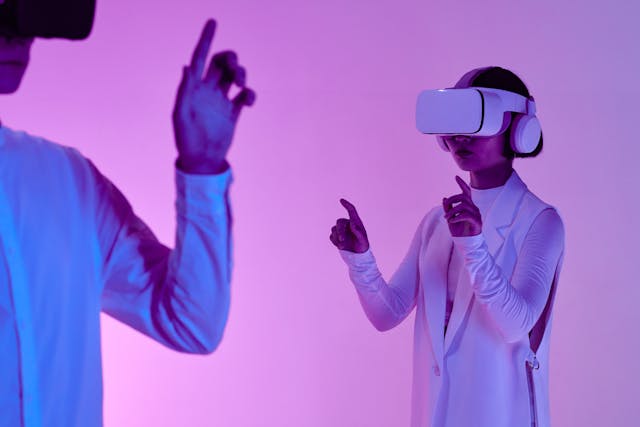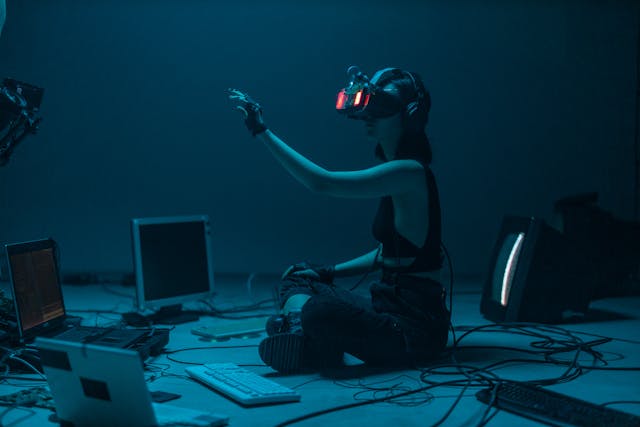The Rise of the Metaverse: What It Means for Businesses and Consumers
The metaverse is becoming a buzzword in technology and business circles. But what exactly is it, and why does it matter? This article breaks down the rise of the metaverse and explores what it means for both businesses and everyday consumers.

What Is the Metaverse?
The metaverse is a virtual world where people can interact with each other and digital environments in real time. Think of it as an online universe made up of 3D spaces, avatars, and interactive experiences. It combines elements of social media, gaming, virtual reality (VR), and augmented reality (AR).
Instead of just looking at a screen, users can enter these spaces, meet friends, work, shop, or attend events as if they were physically there. Companies like Meta (formerly Facebook), Microsoft, and many startups are investing heavily in building metaverse platforms.
How Businesses Are Embracing the Metaverse
New Ways to Connect with Customers
For businesses, the metaverse offers fresh opportunities to engage customers. Brands can create virtual stores where people browse and buy products in 3D, try on clothes virtually, or test out new gadgets. This interactive shopping experience goes beyond traditional online stores.
Events like virtual concerts, product launches, and trade shows attract global audiences without the costs of physical venues. This helps companies reach new markets and build stronger connections.
Remote Work and Collaboration
The metaverse is changing how teams work together. Virtual offices and meeting rooms allow remote workers to collaborate in immersive environments. Instead of video calls, employees can share 3D models, brainstorm on virtual whiteboards, and feel more present with colleagues.
This could lead to increased creativity and productivity, especially for creative industries like design, marketing, and entertainment.
Marketing and Advertising
Advertising in the metaverse is a new frontier. Companies place virtual billboards, sponsor events, or sell branded items like clothing and accessories for avatars. This creates a fun, interactive way to promote products and build brand loyalty.
What the Metaverse Means for Consumers
New Social Experiences
The metaverse opens up new ways to socialize online. People can attend virtual parties, visit digital art galleries, or hang out in virtual parks. This appeals especially to younger generations who grew up with online gaming and social media.
It also offers a safe space for people to meet others from around the world, breaking down physical barriers.
Entertainment and Gaming
Gaming has been a major driver of the metaverse’s growth. Popular games now feature open worlds where players create, explore, and interact endlessly. The metaverse adds layers of social interaction and creativity, making games more immersive.
Beyond gaming, people can watch movies, concerts, or even travel virtually, offering fresh entertainment options.
Privacy and Security Concerns
With all the excitement, consumers should also be aware of risks. The metaverse collects a lot of personal data, and protecting privacy will be a major challenge. Security issues like identity theft or scams could also become more common.
Users need to be cautious about sharing information and understand the platforms they use.

Challenges and the Road Ahead
Building a full metaverse is complex and expensive. It requires advances in technology, fast internet, and powerful devices like VR headsets. There are also questions about standards and how different metaverse worlds will connect.
Regulators and companies must work together to set rules that protect users while encouraging innovation.
Despite these challenges, the metaverse’s potential is huge. Experts predict it could become a multi-trillion-dollar industry within the next decade.
Final Thoughts: Why the Metaverse Matters
The rise of the metaverse represents a big shift in how we interact with technology. For businesses, it offers new ways to reach customers and improve teamwork. For consumers, it promises exciting social and entertainment experiences.
As this virtual world grows, it will change many parts of our daily lives—how we shop, work, play, and connect. Whether you’re a business owner or a tech enthusiast, keeping an eye on the metaverse is a smart move in today’s digital age.












